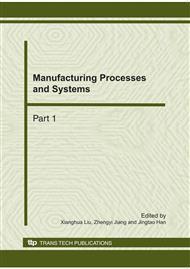p.1491
p.1497
p.1501
p.1507
p.1511
p.1518
p.1523
p.1528
p.1532
Sulfur-Loading Impact on Microstructure and Surface Morphology of Fly Ash-Based Adsorbent for Mercury Removal
Abstract:
Mercury is a toxic air pollution, and coal-fired utility plants are the largest anthropogenic emission source in China. Due to rapidly decreasing the cost and increasing the efficiency, it is becoming necessary to develop alternative technologies/materials for mercury removal. The adsorbents made from fly ash of coal-fired, and became spherical after sintering at temperature 500 . Finally, it has been treated by thermal precipitation sulfur, to remove mercury in fuel gas of coal-fired. High temperature deposition furnace was applied to increase sulfur content in fly ash based adsorbents produced in lab. SEM, BET, TGA and other measurement methods were used to characterize the surface morphology, sulfur distribution and specific surface. The experiments can increase its sulfur content of adsorbent, and the study found that sulfur attached to the surface, mesopore structure, microporous structure of fly ash-based adsorbents. So these treatments can increase their surface area and enhanced their adsorption capacity, while the sulfur was filled in interspace as small molecule S2 and S5. And the specific surface area increased by sulfur-loading and increasing temperature.
Info:
Periodical:
Pages:
1511-1517
Citation:
Online since:
October 2010
Authors:
Price:
Сopyright:
© 2011 Trans Tech Publications Ltd. All Rights Reserved
Share:
Citation:


